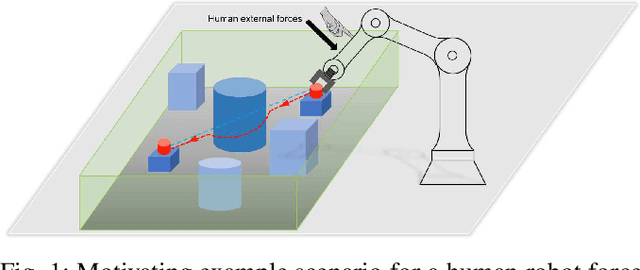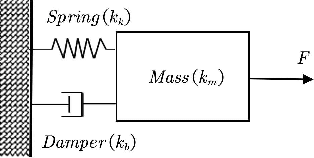Adaptive Admittance Control for Safety-Critical Physical Human Robot Collaboration
Paper and Code
Aug 09, 2022



Physical human-robot collaboration requires strict safety guarantees since robots and humans work in a shared workspace. This letter presents a novel control framework to handle safety-critical position-based constraints for human-robot physical interaction. The proposed methodology is based on admittance control, exponential control barrier functions (ECBFs) and quadratic program (QP) to achieve compliance during the force interaction between human and robot, while simultaneously guaranteeing safety constraints. In particular, the formulation of admittance control is rewritten as a second-order nonlinear control system, and the interaction forces between humans and robots are regarded as the control input. A virtual force feedback for admittance control is provided in real-time by using the ECBFs-QP framework as a compensator of the external human forces. A safe trajectory is therefore derived from the proposed adaptive admittance control scheme for a low-level controller to track. The innovation of the proposed approach is that the proposed controller will enable the robot to comply with human forces with natural fluidity without violation of any safety constraints even in cases where human external forces incidentally force the robot to violate constraints. The effectiveness of our approach is demonstrated in simulation studies on a two-link planar robot manipulator.
 Add to Chrome
Add to Chrome Add to Firefox
Add to Firefox Add to Edge
Add to Edge